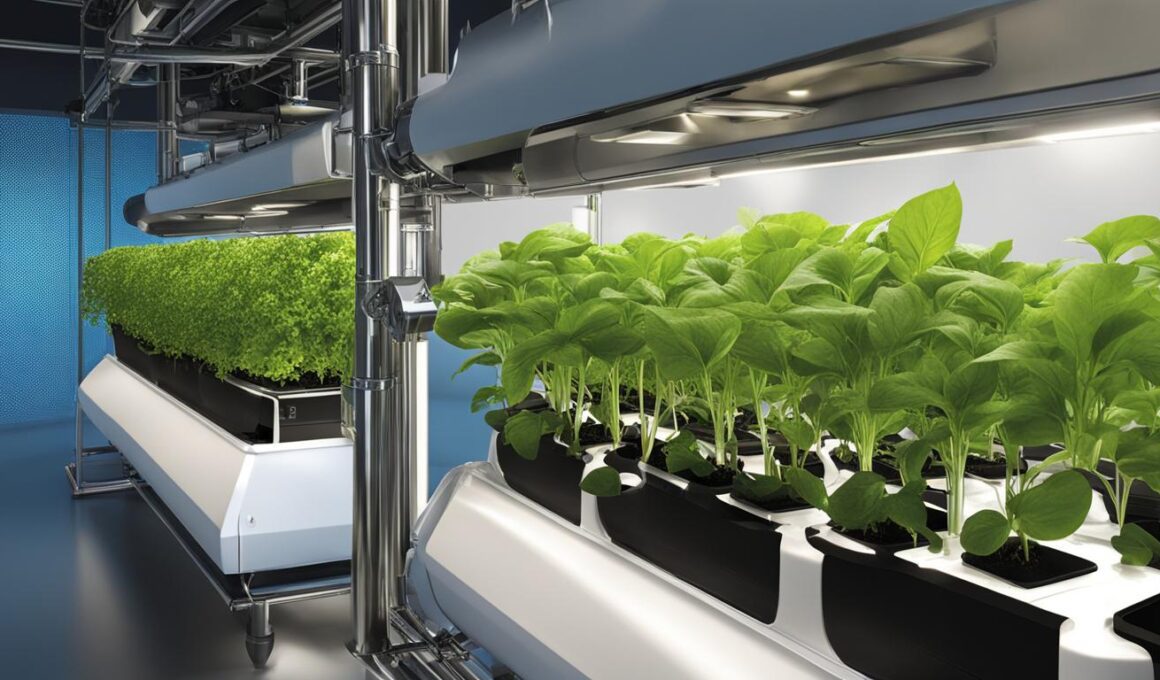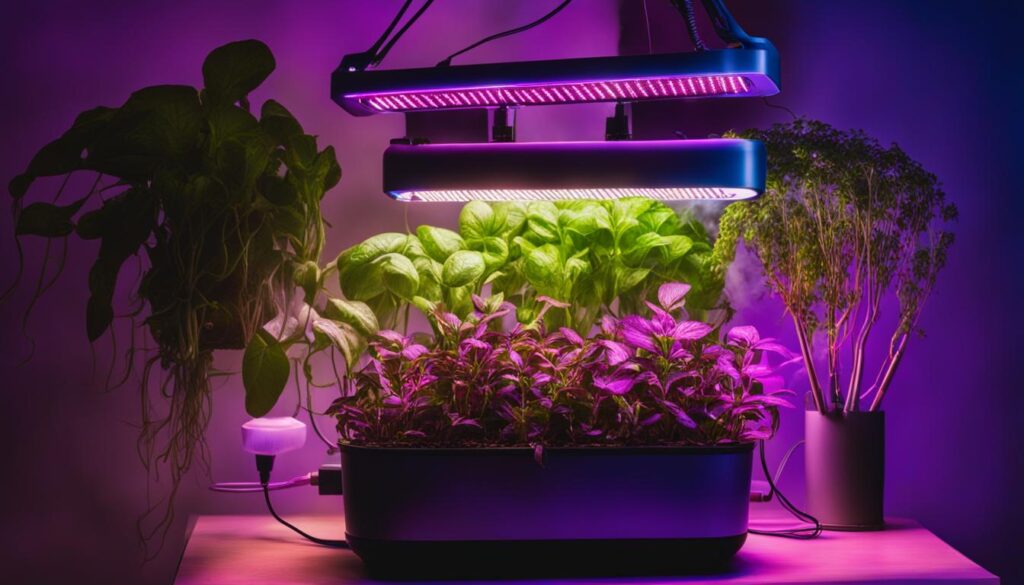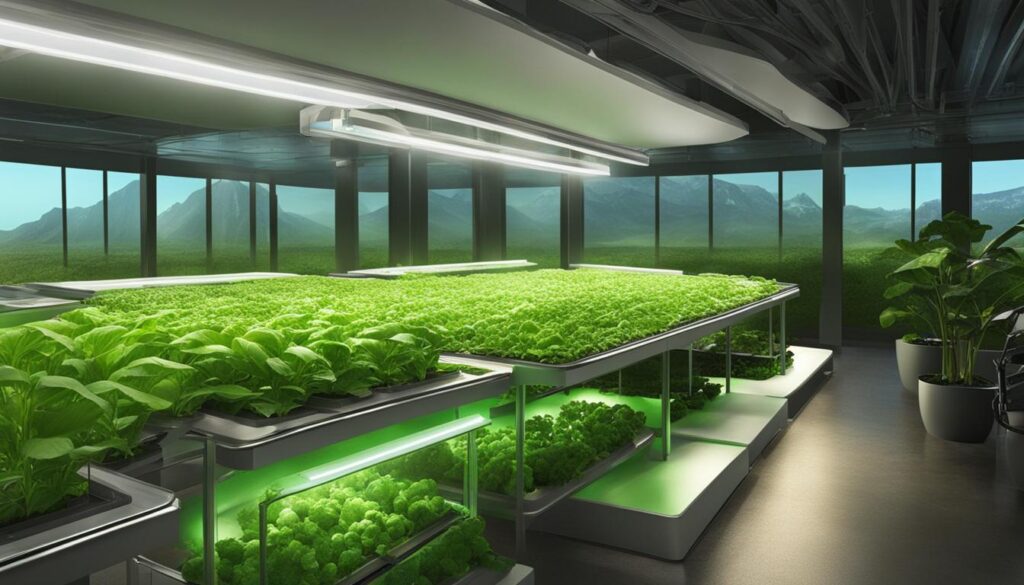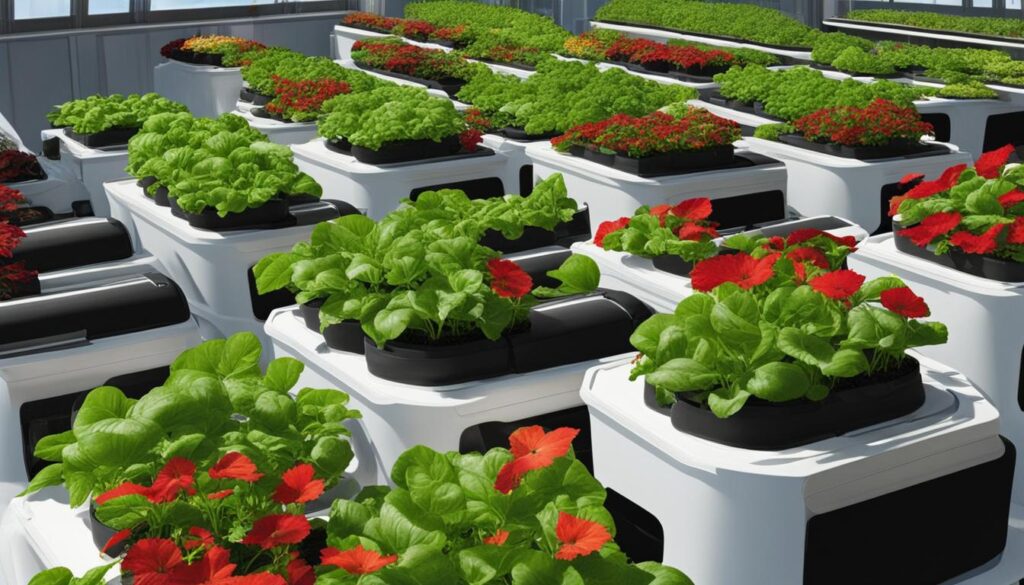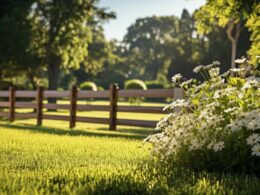When it comes to innovative farming techniques, aeroponics and hydroponics have emerged as popular methods of soilless farming. These methods have gained attention for their ability to grow crops in challenging environments where traditional farming is not feasible. In this article, we will delve into the differences between aeroponics and hydroponics, and highlight the unique benefits they offer.
Key Takeaways
- Aeroponics and hydroponics are soilless farming methods that provide alternatives to traditional farming.
- Aeroponics involves growing plants with suspended roots and misting their roots with a nutrient solution, while hydroponics involves growing plants in water or nutrient-rich solutions.
- Aeroponics offers faster growth, higher yields, and reduced risk of bacterial exposure, while hydroponics offers versatility and various setup options.
- Both aeroponics and hydroponics are environmentally friendly, with aeroponics requiring less land and water compared to hydroponics.
- Choosing the right farming method depends on factors like crop preferences, space availability, and desired level of control over the growing environment.
What is Aeroponics?
Aeroponics is a revolutionary soilless farming technique that involves growing plants with their roots suspended in the air. Unlike traditional farming or hydroponics, where plants are grown in soil or water-based systems, aeroponic plants are nourished by misting their roots with a nutrient solution. This method provides plants with a highly oxygenated environment and reduces the risk of bacterial exposure and root rot.
In aeroponics, plants are typically placed in a chamber or enclosed environment where their roots are exposed to a fine mist of nutrient-rich solution. This misting process ensures that the roots receive optimal nourishment, oxygen, and moisture. By suspending the plants in the air, aeroponics allows for efficient nutrient delivery and encourages fast growth, resulting in higher yields and healthier plants.
“Aeroponics is a game-changer in the world of agriculture. By providing plants with a highly oxygenated environment and precise nutrient delivery, we are able to achieve remarkable results in terms of crop productivity and overall plant health.”
Advantages of Aeroponics:
- Enhanced nutrient absorption due to direct misting of roots
- Faster growth and higher yields compared to traditional farming
- Reduced risk of bacterial exposure and root diseases
- Efficient use of water and nutrients
Aeroponics in Action
| Plant | Grow Time (days) | Yield (lbs) |
|---|---|---|
| Leafy Greens | 30 | 5 |
| Tomatoes | 60 | 10 |
| Herbs | 45 | 3 |
Aeroponics is a promising method for sustainable food production and has the potential to revolutionize agriculture. By harnessing the power of misted nutrient delivery and oxygenation, aeroponics offers a highly efficient and controlled growing environment for crops. Whether it’s leafy greens, tomatoes, or herbs, aeroponics has shown significant potential in achieving faster growth, higher yields, and healthier plants.
What is Hydroponics?
Hydroponics is a soilless farming technique that involves growing plants in water or a nutrient-rich solution instead of soil. This method provides an efficient and controlled environment for plant growth, allowing for optimal nutrient delivery and water usage. Unlike traditional farming, which relies on soil to provide nutrients to plants, hydroponics relies on water-based systems and different setups to nourish the plants directly.
There are several types of hydroponic systems, each with its own advantages and characteristics. Some popular setups include deep water culture, nutrient film technique, ebb and flow, and drip systems. In these systems, plants receive their nutrients directly from the water, which is carefully monitored and adjusted to meet their specific needs. This ensures that plants receive the necessary nutrients in the correct proportions, promoting healthier growth and higher yields.
Hydroponics offers several benefits over traditional farming methods. By eliminating the need for soil, hydroponic systems can be set up in a variety of environments, including urban areas and regions with poor soil quality. Additionally, the controlled environment of hydroponics allows for year-round cultivation, reducing the dependence on seasonal factors and providing a consistent supply of fresh produce. Furthermore, water usage in hydroponics is significantly lower compared to traditional farming, making it a more sustainable option in regions where water scarcity is a concern.
To summarize, hydroponics is a soilless farming method that utilizes water-based systems to deliver nutrients directly to plants. With its versatility, controlled environment, and resource efficiency, hydroponics offers an innovative approach to agriculture that can overcome traditional limitations and provide a sustainable solution for food production.
| Advantages of Hydroponics | Disadvantages of Hydroponics |
|---|---|
|
|
Methodology and Design Differences
When it comes to aeroponics and hydroponics, the methodology and design of these soilless farming methods differ significantly. Aeroponic farms are enclosed environments where plants are grown in a humid atmosphere and misted with a nutrient solution, while hydroponic farms utilize water-based systems to nourish the plants.
In aeroponics, plants have their roots suspended in the air, receiving nutrients through misting. This method creates a highly oxygenated environment and reduces the risk of bacterial exposure and root rot. On the other hand, hydroponics involves plants being grown in water or a nutrient-rich solution, with various setups such as deep water culture, nutrient film technique, ebb and flow, and drip systems. The plants in hydroponic systems receive their nutrients directly from the water, allowing for controlled and efficient delivery.
These differences in methodology and design have implications for the growing conditions and nutrient delivery methods. Aeroponics, with its misting system, provides a unique environment that promotes fast growth and healthy yields. Hydroponics, on the other hand, offers versatility in terms of setup options and can be adapted to suit different plants and growing conditions.
| Aeroponics | Hydroponics | |
|---|---|---|
| Growing Environment | Enclosed, humid atmosphere | Water-based systems |
| Nutrient Delivery | Misting roots with nutrient solution | Direct delivery through water |
| Growth Factors | High oxygenation, reduced risk of bacterial exposure | Versatility, adaptable to different setups and plants |
Overall, the methodology and design differences between aeroponics and hydroponics result in distinct approaches to soilless farming. Both methods have their advantages and can be chosen based on specific preferences and goals, such as the desired level of control over the growing environment, crop preferences, and available resources.
Aeroponics vs. Hydroponics: Plant Growth and Health
In the realm of soilless farming, both aeroponics and hydroponics offer unique advantages for plant growth and health. Aeroponics, with its suspended root system and misting of nutrient solution, provides several benefits that contribute to robust plant development. The increased oxygen intake in aeroponic systems stimulates faster growth and higher yields, making it an attractive option for farmers.
Aeroponics also creates a sealed environment that reduces the risk of bacterial exposure and disease. Without the need for soil, plants in aeroponic systems are less susceptible to root rot and other soilborne pathogens. The misting of roots with a nutrient solution provides efficient and precise nutrient delivery, promoting healthy plant development.
While hydroponics also fosters healthy plant growth, it does come with some potential risks. The water-based systems in hydroponics can be more prone to bacterial exposure, which can lead to infections or diseases in plants. However, these risks can be mitigated with proper care and maintenance, and hydroponics still offers excellent yield potential and controlled nutrient delivery.
Aeroponics vs. Hydroponics: A Comparison of Plant Growth and Health
| Aspect | Aeroponics | Hydroponics |
|---|---|---|
| Root Growth | The suspended root system allows for increased oxygen intake, leading to faster growth | Roots are immersed in water or nutrient solution, providing efficient nutrient delivery |
| Bacterial Exposure | The sealed environment and lack of soil reduce the risk of bacterial exposure and disease | Water-based systems may be more susceptible to bacterial exposure and require careful maintenance |
| Nutrient Delivery | Efficient and precise nutrient delivery through misting of roots with a nutrient solution | Controlled nutrient delivery through water-based systems |
When considering the overall plant growth and health benefits, aeroponics proves to be an advantageous method. Its suspended root system, increased oxygen intake, and precise nutrient delivery contribute to faster growth, higher yields, and reduced risk of bacterial exposure. However, hydroponics can still provide excellent results with proper care, offering versatility and controlled nutrient delivery.
When considering the environmental impact of soilless farming methods like aeroponics and hydroponics, it’s important to evaluate factors such as land and water usage, as well as resource efficiency. Both methods offer sustainable alternatives to traditional farming, but there are some notable differences in their environmental footprints.
In terms of land and water usage, aeroponics has a clear advantage. Compared to hydroponics, aeroponic systems require significantly less land and water. In fact, aeroponics uses 98% less land and 95% less water than traditional farming methods. This makes it a more resource-efficient option, especially when considering land scarcity and water conservation.
“Aeroponics uses 98% less land and 95% less water than traditional farming, making it a more sustainable option for food production.”
Another aspect to consider is resource efficiency. Both aeroponics and hydroponics are designed to optimize the use of nutrients and water, minimizing waste. However, due to its misting-based nutrient delivery system, aeroponics tends to be more efficient in nutrient absorption by plants. The controlled and precise delivery of nutrients in aeroponic systems ensures that plants receive the necessary elements without excess, reducing the potential for nutrient leaching and environmental pollution.
In summary, while both aeroponics and hydroponics offer environmentally friendly farming methods, aeroponics has the edge when it comes to land and water usage, as well as resource efficiency. Its ability to produce high yields with minimal land and water requirements makes it a promising solution for sustainable food production in the face of global challenges.
Aeroponics vs. Hydroponics: Yield and Efficiency
When it comes to crop production and efficiency, both aeroponics and hydroponics offer impressive results compared to traditional farming methods. However, there are some key differences in terms of yield and overall effectiveness.
In aeroponics, the suspended roots and misting nutrient delivery system contribute to faster growth rates and potentially higher crop yields. The highly oxygenated environment in aeroponic systems promotes robust root development, leading to healthier plants and increased productivity. Additionally, the precise control over nutrient delivery in aeroponics allows for optimal absorption and utilization, enhancing overall efficiency.
On the other hand, hydroponics also provides high yields, although they may vary depending on the specific setup and crop being grown. Water-based systems in hydroponics can deliver nutrients directly to the plants’ roots, allowing for efficient absorption and growth. However, the yield in hydroponics may not be as consistently high as in aeroponics due to potential fluctuations in nutrient availability and water quality.
Overall, both aeroponics and hydroponics offer excellent yield and efficiency compared to traditional farming methods. However, aeroponics has the potential to provide even greater productivity and faster growth rates, making it a compelling option for those seeking optimal crop production and resource efficiency.
Choosing the Right Method for Your Needs
When deciding between aeroponics and hydroponics for your soilless farming needs, there are several considerations to keep in mind. Think about your crop preferences, available space, and the level of control you desire over the growing environment. Each method offers unique benefits that can align with your specific requirements.
Considerations:
- Crop Preferences: Certain crops may thrive better in either aeroponic or hydroponic systems. Research which method is best suited for the specific plants you want to grow.
- Space Availability: Assess the space you have available for your soilless farming setup. Aeroponic systems generally require less space due to their vertical design, making them ideal for smaller areas.
- Level of Control: Determine how much control you want over the growing environment. Aeroponics provides more precise control over nutrient delivery, humidity, and temperature, while hydroponics offers versatility with different setups.
By considering these factors, you can make an informed decision on which method is most suitable for your needs and goals. Whether you prioritize high yields, efficient resource usage, or flexibility, both aeroponics and hydroponics offer viable options for soilless farming.
Comparison Table – Aeroponics vs. Hydroponics:
| Considerations | Aeroponics | Hydroponics |
|---|---|---|
| Crop Preferences | Can be tailored to a wide range of crops | Varies depending on the specific setup |
| Space Availability | Requires less space due to vertical design | Can be adapted to different space constraints |
| Level of Control | Provides precise control over nutrient delivery and environmental factors | Offers versatility with various setups |
It’s important to note that both aeroponics and hydroponics have their own advantages, and the optimal farming method depends on your specific requirements and preferences. Take the time to research and understand the unique characteristics of each system to make an informed decision for your soilless farming endeavors.
DIY Hydroponics and Aeroponics Systems for Home
Interested in growing your own fresh produce at home? DIY hydroponic and aeroponic systems are a great way to start your home farming journey. These soilless farming methods offer efficient growing techniques that can be tailored to fit your space and gardening preferences. Let’s explore the basics of DIY hydroponic and aeroponic systems and how you can set up your own home farm.
DIY Hydroponic Systems
Hydroponic systems provide a versatile and controlled environment for plant growth. Here are a few popular DIY hydroponic setups:
- Deep water culture: Plants are suspended above a nutrient-rich water solution, with their roots submerged.
- Nutrient film technique: A thin film of nutrient solution flows over the roots of the plants.
- Drip systems: Nutrient solution drips slowly onto the roots of the plants via a network of tubes.
With these DIY hydroponic systems, you can easily monitor and adjust the nutrient levels, pH balance, and water supply to optimize plant growth.
DIY Aeroponic Systems
Aeroponic systems take soilless farming to the next level by misting plant roots with a nutrient solution. Here are a few DIY aeroponic setups you can try:
- Aeroponic towers: Plants are stacked vertically in tower-like structures, with their roots exposed to periodic misting.
- Aeroponic foggers: Fine mist is sprayed directly onto the roots of the plants, providing optimal oxygenation.
DIY aeroponic systems offer efficient nutrient delivery and increased oxygenation, resulting in faster growth and higher yields.
Whether you choose hydroponics or aeroponics, setting up a DIY system at home requires careful planning and consideration. You’ll need to select suitable containers, nutrient solutions, growing mediums, and lighting options based on the specific requirements of your chosen method. Additionally, regular monitoring of pH levels, nutrient concentrations, and water quality is crucial for maintaining optimal plant health.
With the right setup guide and a bit of patience, you can enjoy the rewards of growing your own fresh produce using DIY hydroponic and aeroponic systems. Start small and gradually expand your home farm to suit your needs and available space. Happy farming!
Commercial Hydroponic and Aeroponic Farms
Commercial hydroponic and aeroponic farms have emerged as innovative solutions for sustainable food production. These soilless farming methods offer significant scalability and resource efficiency, making them ideal for meeting the growing demand for fresh produce.
One key advantage of commercial hydroponic farms is their ability to maximize space utilization. By growing plants in water-based systems, hydroponic farms can accommodate a large number of crops in a relatively small area. This vertical farming approach allows for efficient land use, especially in urban environments where space is limited. Additionally, hydroponic farms can be designed with multiple levels of growing trays or racks, further optimizing crop density and increasing overall yield.
Aeroponic farms, on the other hand, take vertical farming to new heights. With aeroponic towers, plants are grown vertically, suspended in the air, and misted with nutrient solutions. This method not only maximizes space but also optimizes nutrient delivery to the plant roots. The misting process in aeroponics ensures that each plant receives an equal amount of nutrients, resulting in consistent growth rates and high-quality produce.
| Advantages of Commercial Hydroponic Farms | Advantages of Commercial Aeroponic Farms |
|---|---|
| Maximizes space utilization | Vertical farming for superior space utilization |
| High crop density and increased yield | Consistent nutrient delivery and uniform growth rates |
| Efficient water and nutrient usage | Reduced water and nutrient consumption |
| Controlled environment for year-round production | Reduces the risk of pests and diseases |
Both commercial hydroponic and aeroponic farms offer distinct advantages for sustainable agriculture. While hydroponic farms excel in space utilization and increased crop density, aeroponic farms provide precise nutrient delivery and reduced water consumption. The choice between these methods depends on the specific requirements of the crops being grown, available resources, and the desired level of control over the growing environment.
Environmental Impacts and Future Potential
Soilless farming methods like aeroponics and hydroponics offer significant environmental benefits and have the potential to shape the future of agriculture. By eliminating the need for soil and reducing water usage, these methods promote sustainability and resource efficiency in food production.
Aeroponics and hydroponics both contribute to sustainable agriculture by conserving water. Compared to traditional farming, which relies heavily on irrigation, aeroponics uses 95% less water, while hydroponics uses 70-90% less water. This significant reduction in water consumption helps alleviate the strain on freshwater resources, especially in regions facing water scarcity.
Additionally, soilless farming eliminates the need for conventional pesticides and herbicides. In aeroponics and hydroponics, plants are grown in controlled environments, reducing the risk of pests and diseases. This reduction in chemical usage contributes to cleaner ecosystems and healthier food.
| Aeroponics | Hydroponics | |
|---|---|---|
| Water Usage | 95% less than traditional farming | 70-90% less than traditional farming |
| Pesticide Usage | Minimal to none | Minimal to none |
Looking ahead, soilless farming methods have the potential to address the challenges of land scarcity and climate change. By utilizing vertical farming techniques, such as aeroponic towers, farmers can maximize crop production within limited spaces. These innovative farming methods allow for year-round cultivation and reduce the need for large expanses of arable land.
As the demand for sustainable food production continues to rise, soilless farming offers a promising solution. With ongoing advancements in technology and increased adoption of these methods, we can expect to see a future where aeroponics and hydroponics play a significant role in feeding our growing population while minimizing environmental impact.
Conclusion
After exploring the differences and benefits of aeroponics and hydroponics, it is clear that both methods offer viable options for soilless farming. Aeroponics provides faster growth, higher yields, and water efficiency, making it an attractive choice for those looking to maximize crop production. On the other hand, hydroponics offers versatility and a range of setup options, allowing farmers to adapt their systems to different crops and available space.
When choosing the optimal farming method, it is essential to consider your crop preferences, space availability, and environmental impact considerations. Aeroponics may be the preferred option if you prioritize high yields and a controlled environment. However, if you value versatility and the ability to experiment with different setups, hydroponics may be the better choice.
Both aeroponics and hydroponics contribute to sustainable agriculture. Their reduced water usage, elimination of soil depletion, and increased resource efficiency make them environmentally beneficial alternatives to traditional farming methods. In a world facing land scarcity and climate change, these soilless farming methods have the potential to revolutionize agriculture and provide sustainable solutions for food production.
In conclusion, whether you choose aeroponics or hydroponics, both methods offer promising futures for optimal farming. By harnessing the benefits of soilless farming, you can cultivate crops efficiently, minimize environmental impact, and contribute to a more sustainable approach to agriculture.
What Are the Benefits of Aeroponic Farming Compared to Hydroponic and Soil gardening?
When considering hydroponics vs soil gardening, aeroponic farming offers several benefits. It requires less water and nutrients, resulting in lower operating costs. Aeroponic systems also provide better control over plant growth and minimize the risk of pests and diseases. Additionally, they allow for faster and higher crop yields.
FAQ
What is the difference between aeroponics and hydroponics?
Aeroponics is a soilless farming technique where plants are grown with their roots suspended in the air and nourished by misting their roots with a nutrient solution. Hydroponics is a soilless farming technique where plants are grown in water or a nutrient-rich solution instead of soil.
How do aeroponics and hydroponics differ in methodology and design?
Aeroponic farms are enclosed environments where plants are grown in a humid atmosphere and misted with a nutrient solution. Hydroponic farms can involve water-based systems where plants are either fully submerged or intermittently fed by water flow.
What are the advantages of aeroponics and hydroponics for plant growth and health?
Aeroponics offers increased oxygen intake, faster growth, and higher yields due to the suspended roots and nutrient delivery method. Hydroponics also promotes healthy plant growth but may be more susceptible to bacterial exposure due to the water-based systems.
How do aeroponics and hydroponics impact the environment?
Aeroponics has a smaller environmental footprint as it requires less land and water compared to hydroponics. Aeroponics uses 98% less land and 95% less water than traditional farming, making it a more sustainable option for food production.
Which method, aeroponics, or hydroponics, provides higher yields?
While both methods offer high yields compared to traditional farming, aeroponics has the potential for even greater productivity due to increased oxygen exposure and nutrient delivery. Hydroponics also provides high yields but may have variances depending on the specific setup and crop being grown.
How do I choose between aeroponics and hydroponics for my farming needs?
Consider your crop preferences, available space, and desired level of control over the growing environment. Aeroponics may be more suitable for those looking for higher yields and a controlled environment, while hydroponics offers versatility and various setup options.
Can I set up a hydroponic or aeroponic system at home?
Yes, it is achievable to set up a hydroponic or aeroponic system at home with the right guidance. There are various DIY options available for both hydroponics and aeroponics, such as deep water culture, nutrient film technique, and drip systems. These systems can be tailored to fit your space and growing needs.
Are there commercial hydroponic and aeroponic farms?
Yes, hydroponic and aeroponic farming methods have gained popularity in commercial agriculture due to their scalability and potential for high-quality crop production. Commercial setups often utilize vertical farming techniques, such as aeroponic towers, to grow a large quantity of crops in limited areas.
What are the environmental impacts and future potential of aeroponics and hydroponics?
Both aeroponics and hydroponics offer environmental benefits compared to traditional farming, including reduced water usage, no soil depletion, and increased resource efficiency. These soilless farming methods have the potential to revolutionize agriculture and provide sustainable solutions for food production in a world facing land scarcity and climate change.





